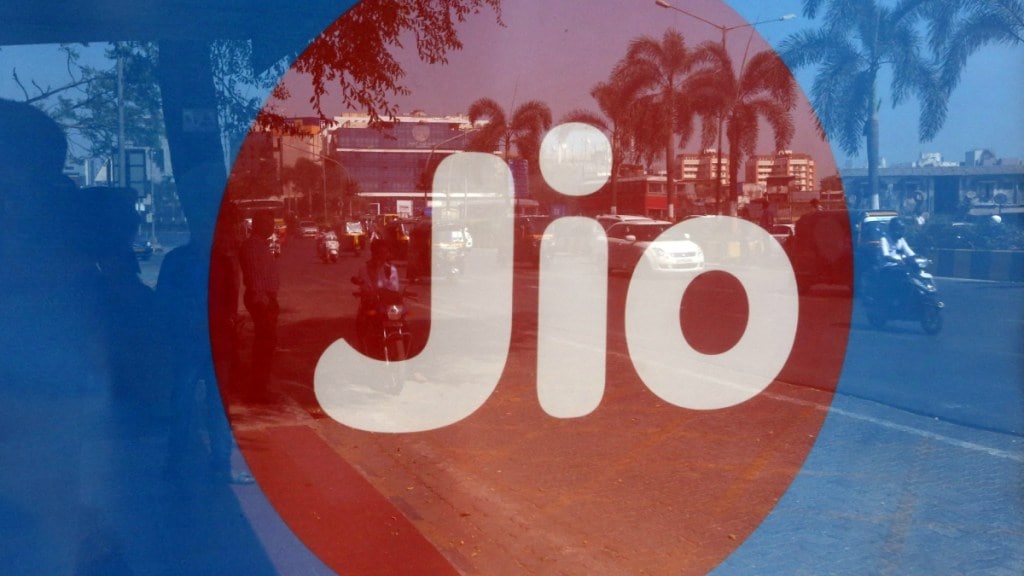Jio Platforms, the parent company of telecom operator Reliance Jio, on Monday reported a 2.5% quarter-on-quarter (QoQ) growth in its net profit to Rs 5,583 crore for the January-March quarter.
Consolidated revenue from operations during the period rose 4.2% QoQ to Rs 28,871 crore on the back of subscriber additions, growth in data and voice consumption.
In the absence of tariff hikes and unlimited 5G services, average revenue per user (Arpu) per month was flat at Rs 181.7, sequentially. The company said better subscriber mix in the Arpu growth was partially offset by increasing mix of promotional 5G traffic, offered unlimited to subscribers and not yet charged separately.
The numbers were broadly in line with analysts’ estimates.
Net profit growth at 2.5% was marginally down from 2.8% in the preceding quarter. Revenue growth in the January-March quarter was, however, higher compared to 3.1% sequential growth in the previous quarter.
On a standalone basis, Reliance Jio’s net profit rose 2.5% QoQ to Rs 5,337 crore, whereas its revenue from operations rose 2.3% QoQ to Rs 25,959 crore during the quarter.
Reliance Jio added 10.9 million subscribers during the quarter, compared to 11.2 million subscribers additions in the preceding quarter. At the end of March quarter, total subscribers were at 481.8 million, up from 470.9 million million as of December end.
The growth was largely due to demand for transition of 2G users to JioBharat 4G phones. JioBharat has over 45% market share in the sub-Rs 1,000 phone segment.
Network leadership sustained the subscriber addition with Jio outpacing competition and adding 10.9 million net subscribers during the quarter, the company said in the earnings release.
“Performance of the digital services segment has been boosted by accelerated expansion of subscriber base, supported by both mobility and fixed wireless services,” said Mukesh Ambani, chairman and managing director of Reliance Industries.
“With over 108 million True 5G customers, Jio truly leads the 5G transformation in India. From upgrading the hitherto 2G users to smartphones, to leading the effort of producing AI-driven solutions, Jio has proved its capability in strengthening the nation’s digital infrastructure,” Ambani added.
At 108 million 5G subscribers, Jio now is the only company with the largest user base outside China. Its 5G network now carries 28% of its wireless data traffic, with the entire 5G data being carried on Jio’s own 5G+4G combo core, the company said.
Owing to revenue growth, consolidated operating profit or Ebitda rose 2.9% QoQ to Rs 14,360 crore. Ebitda margin, however, contracted by 70 basis points sequentially to 49.7%. This is because of higher network operating expenses, selling and distribution expenses amid rising 5G promotions, licence fee/spectrum charges, among other operation expenses.
Total data traffic rose 7.3% QoQ to 40.9 billion GB. The growth can be attributed to the start of the Indian Premier League (IPL) in March, high number of fiber broadband and AirFiber users added during the quarter. The company said JioAirFiber is now available in over 5,900 cities/ towns, with pan-India coverage expected soon.
Average daily data usage for AirFiber subscribers is at 13 GB, which is 30% higher than JioFiber subscribers. Network slicing on standalone 5G network and Jio’s unique point-to-multi-point deployment is transforming fixed broadband infrastructure in India, the company said.
“Jio continues to maintain its network leadership and offer innovative digital solutions to multiple customer cohorts. This is driving consistent outperformance in terms of subscriber additions and engagement levels,” said Akash M Ambani, chairman at Reliance Jio.
“Continued acceleration in growth of JioAirFiber subscriber base and ramp-up of digital services will sustain industry-leading growth for Jio,” Akash Ambani added.
The average data consumption per user rose 5.1% sequentially to 28.7 GB per month.
The total voice consumption on the network rose 5% QoQ to 1.41 trillion minutes during the quarter. The average voice consumption per user per month rose to 1,008 minutes from 982 minutes in the preceding quarter.


